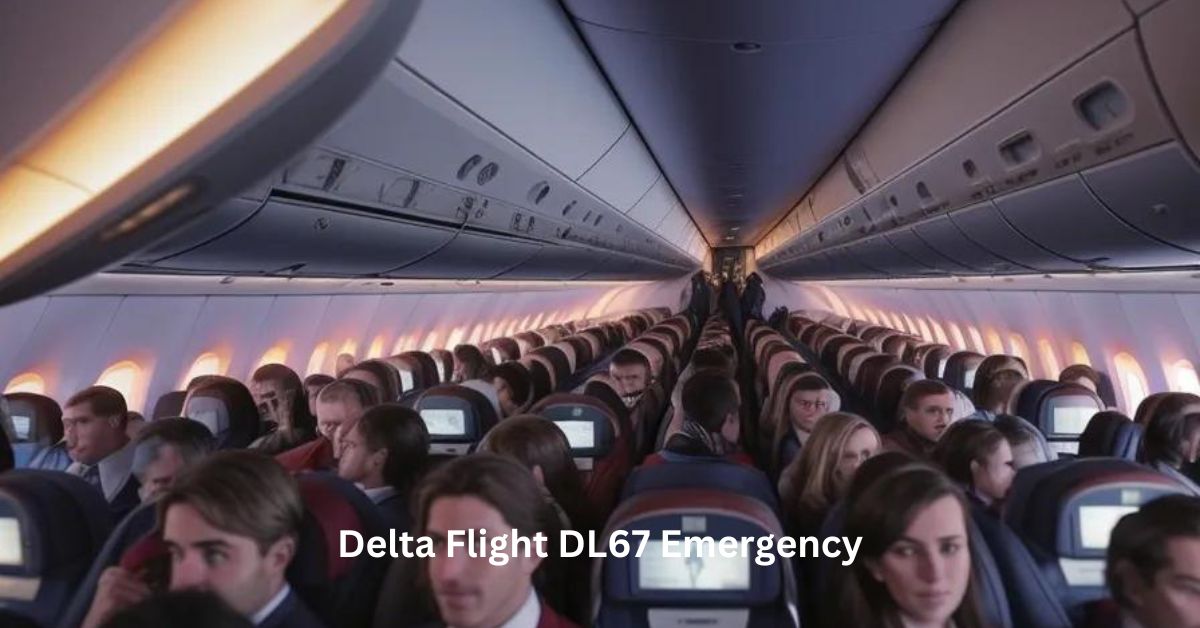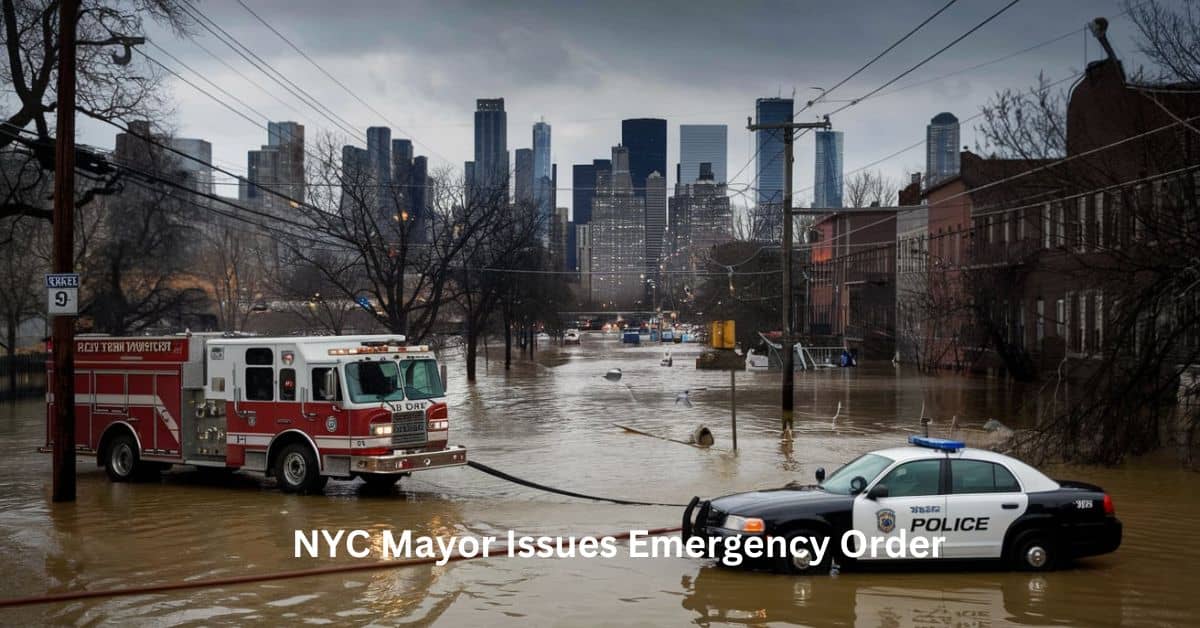Delta Flight DL67 Emergency: A Comprehensive Look at the Incident

The skies are usually peaceful, but every now and then, a flight experiences an emergency that grabs the world’s attention. On April 11th, a Delta Airlines flight from Rome to Atlanta, known as Delta Flight DL67, was forced to divert after the crew declared a medical emergency. What was initially expected to be a routine journey quickly turned into a moment of concern for passengers, the flight crew, and their families. In this article, we’ll take an in-depth look at the Delta Flight DL67 emergency, examine what happened, and provide insights into the overall safety of air travel today.
Delta Flight DL67 Emergency: What Happened?
Delta Flight DL67, a direct flight from Rome, Italy, to Atlanta, Georgia, was cruising at a regular altitude when a medical emergency occurred on board. Details of the specific medical situation remain confidential, but it was serious enough that the flight crew made the decision to divert the plane from its original path.
The Flight Path and Diversion
DL67 took off from Leonardo da Vinci-Fiumicino Airport in Rome with Atlanta’s Hartsfield-Jackson International Airport as its destination. After a few hours into the transatlantic flight, the emergency was declared. The decision to divert a flight is never made lightly, especially on international journeys. In this case, Delta Flight DL67 was rerouted to a closer airport to address the medical issue as quickly as possible.
As is common in such situations, the crew consulted with ground medical experts and air traffic control to ensure that the affected passenger received the appropriate medical attention in the quickest way possible. The plane successfully landed at the diversion airport, where the passenger was attended to by medical personnel.
The Role of the Crew in Emergencies
One of the critical aspects of any in-flight emergency is the crew’s response. In the case of Delta Flight DL67, the flight attendants and pilots acted swiftly and efficiently. The crew on board is trained rigorously to handle medical situations, as well as other emergencies, ensuring that passengers remain calm and safe.
Crew Training and Quick Decision-Making
Flight attendants are trained not only to provide top-tier customer service but also to handle medical situations with a cool head. Each year, they undergo training to refresh their skills in CPR, the use of automated external defibrillators (AEDs), and other first aid measures. In cases like the Delta Flight DL67 emergency, flight attendants must work together quickly, coordinating with passengers and pilots to ensure a smooth diversion.
In-Flight Medical Assistance
Many flights, including Delta Flight DL67, are equipped with basic medical supplies and medications to assist in emergencies. However, the crew often relies on communication with ground-based medical professionals, who can offer real-time guidance for more complicated situations. In addition, many airlines, including Delta, hope to have a medical professional as a passenger onboard who might offer further assistance.
Air Traffic Control’s Crucial Role
In the case of the Delta Flight DL67 emergency, air traffic control played an essential part in guiding the aircraft safely to its diversion airport. As soon as the medical emergency was declared, the pilots would have contacted the nearest air traffic controllers to inform them of the situation. Air traffic control is responsible for clearing a path for the flight to land, coordinating with local emergency services, and making sure other flights are adjusted to accommodate the emergency.
What Happens After an In-Flight Medical Emergency?
Once a flight like DL67 diverts and lands safely, the passenger is typically transported to a local hospital for immediate care. In this case, the priority was the health and safety of the individual involved in the emergency. Meanwhile, the remaining passengers are kept updated by the crew on when the flight can resume.
Reboarding and Continuing the Flight
After a medical emergency diversion, the affected passenger is generally removed from the flight, along with any accompanying family members or friends. Once the situation is under control and the plane is cleared for takeoff, the flight continues to its destination, in this case, Atlanta. Despite the unexpected detour, Delta Flight DL67 eventually completed its journey, and the airline ensured that passengers were accommodated for any delays.
The Safety of Air Travel
While the Delta Flight DL67 emergency may have been stressful for those on board, it’s important to remember that air travel remains one of the safest modes of transportation. Airlines like Delta are well-prepared for emergencies, and their crews are trained to handle a wide range of situations.
Medical Emergencies in the Air: How Common Are They?
Medical emergencies on flights are more common than many realize. According to statistics, roughly 1 in every 604 flights has a medical incident on board. The most frequent causes of in-flight medical emergencies are fainting, respiratory issues, and heart-related problems. Fortunately, thanks to the preparedness of flight crews and advancements in communication with ground medical experts, the vast majority of these situations are resolved without serious complications.
How Airlines Prepare for Emergencies
Airlines take extensive measures to ensure that both the flight crew and the plane itself are equipped to handle emergencies. All flight attendants are required to undergo annual emergency response training, including medical emergency training. Delta, like many other airlines, also has policies in place to prioritize the safety and comfort of all passengers during unexpected events like the Delta Flight DL67 emergency.
Passenger Reactions and Experiences During Emergencies
For many passengers, being on a flight that suddenly diverts due to an emergency can be anxiety-inducing. Passengers on Delta Flight DL67 likely experienced some level of stress as the flight diverted from its original course. However, many passengers often report feeling reassured when they see how swiftly and calmly the crew responds to emergencies.
How Passengers Can Stay Calm During an In-Flight Emergency
If you ever find yourself on a flight that encounters an emergency, whether medical or otherwise, it’s important to stay calm. Trust the flight crew, who are trained to handle such situations. Listen carefully to any instructions given and follow them as directed. In the case of a medical emergency, offering to help if you have medical training can also make a big difference.
Delta’s Response to Emergencies
Delta Airlines, like many major carriers, has well-established protocols for handling emergencies, ensuring that passenger safety is always the top priority. After an incident like the Delta Flight DL67 emergency, the airline works quickly to address the needs of the affected passengers and their families.
Delta’s Commitment to Passenger Safety
Delta prides itself on its commitment to passenger safety. In situations like the Delta Flight DL67 emergency, the airline’s immediate goal is to protect the passenger experiencing the medical issue while ensuring that the rest of the passengers are not unduly affected. Once the plane has safely landed, Delta typically works with passengers to rebook flights if necessary and provides compensation for any delays caused by the diversion.
Insights into the Aviation Industry’s Safety Standards
Aviation safety has come a long way over the years, and the Delta Flight DL67 emergency is an example of how modern airlines are equipped to deal with unexpected situations. From the crew’s training to the communication between pilots and ground control, every element of air travel is designed to prioritize safety.
How Airlines Are Improving Emergency Response
In recent years, airlines have introduced more advanced technology and training to improve the response to in-flight emergencies. Many carriers now have real-time access to medical professionals on the ground through satellite communication, ensuring that any medical issues are handled with expert guidance. Additionally, more planes are being equipped with enhanced medical kits that can address a wider range of emergencies.
The Importance of Passenger Health During Flights
One lesson from the Delta Flight DL67 emergency is the importance of taking care of your health when flying. Long flights, especially transatlantic ones like DL67, can strain passengers physically. It’s a good idea to stay hydrated, move around periodically to avoid blood clots, and let the crew know if you’re feeling unwell.
Frequently Asked Questions (FAQs)
1. What happened during the Delta Flight DL67 emergency?
On April 11th, Delta Flight DL67, traveling from Rome to Atlanta, experienced a medical emergency mid-flight, forcing the plane to divert to a nearby airport.
2. How do flight crews handle medical emergencies?
Flight crews are trained to handle medical emergencies through first aid training, the use of medical equipment like AEDs, and communication with ground-based medical professionals.
3. Is air travel safe during emergencies?
Yes, air travel is very safe, even in emergencies. Airlines like Delta have protocols to ensure the safety of all passengers, including quick diversions and medical assistance when necessary.
4. How common are medical emergencies on flights?
Medical emergencies occur on about 1 in every 604 flights. The most common emergencies include fainting, respiratory issues, and heart-related problems.
5. What should I do if there’s an emergency during my flight?
Remain calm, listen to the crew’s instructions, and follow any guidelines given. If you have medical training, offer to assist if appropriate.
6. Did the affected passenger from Delta Flight DL67 receive help?
Yes, the flight crew followed protocol, and the plane diverted so that the affected passenger could receive medical attention at a nearby airport.
7. How does Delta respond to emergencies after the flight?
Delta prioritizes passenger safety and ensures that everyone involved in the emergency receives appropriate assistance. The airline also works to rebook flights and offer compensation for any delays.
Conclusion
The Delta Flight DL67 emergency highlights the importance of safety and preparedness in modern air travel. While medical emergencies in the air can be concerning, the professionalism and quick action of flight crews, pilots, and air traffic controllers ensure that these situations are handled efficiently and safely. Despite the stress that emergencies can bring, air travel remains one of the safest ways to travel, with airlines like Delta constantly improving their response protocols. Passengers on Delta Flight DL67, like those on countless other flights, witnessed firsthand the effectiveness of these measures in a real-world scenario.










